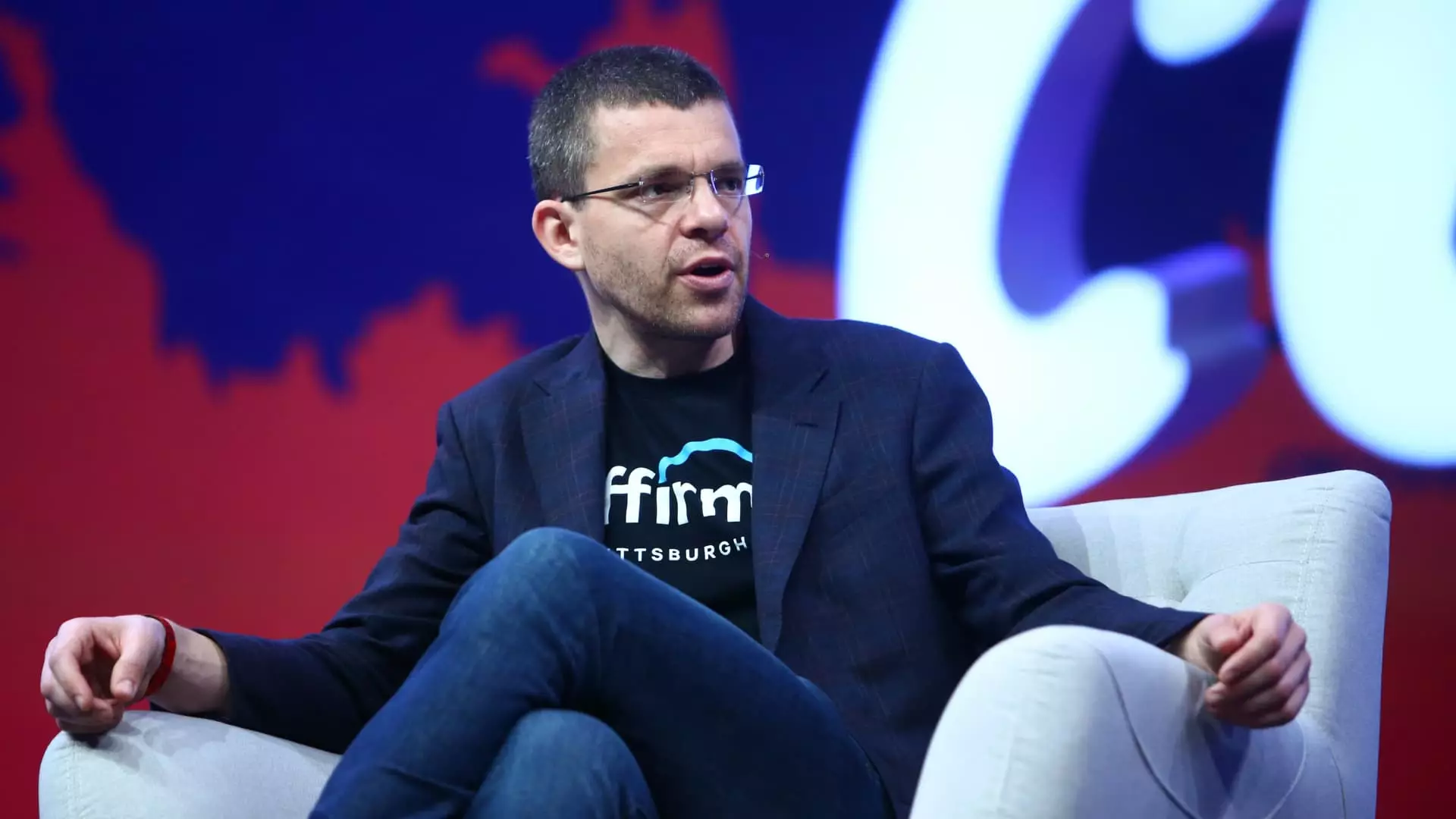In a robust showing that has Silicon Valley buzzing, Affirm Holdings, a key player in the buy now, pay later (BNPL) sector, experienced a remarkable surge in its stock price, with shares climbing over 15% during after-hours trading on Thursday. This meteoric rise came on the heels of the company’s fiscal second-quarter earnings, which revealed performance metrics that exceeded analysts’ projections. By analyzing their results, one gains insight into both Affirm’s operational prowess and the underlying trends shaping the BNPL industry.
Performance Highlights That Impress
Affirm’s recent financial disclosures tell a compelling story. The company reported earnings per share of $0.23, dramatically outperforming estimates that anticipated a loss of $0.15 per share. Furthermore, revenue reached an impressive $866 million, surpassing expectations of $807 million. Such figures are particularly noteworthy, as they are reflective of a broader trend toward consumer financing through BNPL options.
Gross merchandise volume (GMV), a critical indicator demonstrating the total value of transactions processed through its platform, reached a significant milestone by exceeding $10 billion for the first time. Specifically, Affirm recorded $10.1 billion in GMV, a figure that not only eclipsed estimates of $9.64 billion but also marked a substantial year-over-year increase of 35%. Additionally, quarterly revenue experienced a staggering rise of 47% compared to the previous year, growing from $591 million.
When revenue outpaces GMV growth, it often indicates enhanced unit economics within the firm, showcasing the effectiveness of Affirm’s business model. In this quarter, the company’s revenue less transaction costs (RLTC) soared 73% to $419 million, pushing its RLTC margin to 4.1%—a figure that surpasses the long-term target margin of 3% to 4%. Such healthy margins are indicative of a company that is not only scaling effectively but also managing operational costs efficiently.
Strategic Insights and Future Projections
The driving factors behind this performance were further elucidated by Chief Financial Officer Rob O’Hare during a recent interview with CNBC. O’Hare noted that while a $60 million gain from a debt repurchase contributed to the positive earnings report, the real story lies in the fundamentals of the business itself. The focus on adjusted operating income, perceived as the company’s bottom-line profitability metric, reveals a commitment to sustainable growth.
Looking forward, Affirm has provisioned an ambitious revenue forecast for the upcoming quarter, estimating figures between $755 million and $785 million, with expectations anchored at $770 million, slightly below analysts’ consensus of $772 million. Moreover, the company reiterated its serious commitment to achieving profitability based on Generally Accepted Accounting Principles (GAAP) by the conclusion of its fiscal fourth quarter in 2025.
Affirm’s active consumer base has witnessed significant growth, with a 23% year-over-year increase to 21 million users. This expanding user base is complemented by the success of the Affirm Card, a flagship product that saw active users skyrocket by 136% to 1.7 million. Card usage has more than doubled, further cementing the Affirm platform as a preferred choice for consumers exploring BNPL options.
Strategic partnerships with major brands such as Apple, Amazon, and Shopify have also played a crucial role in bolstering Affirm’s growth trajectory. A notable innovation was the collaboration between Affirm and Apple, which introduced a seamless application process for loans through iPhones and iPads for U.S. Apple Pay users. This integration exemplifies how Affirm is leveraging technology to enhance customer experience while driving product adoption.
The increasing prevalence of zero-interest loans, which are often subsidized by merchants to stimulate sales, reflects the evolving landscape of consumer finance. This trend has shown significant traction, particularly as merchants optimize marketing strategies during key retail seasons such as the calendar fourth quarter. Affirm’s President, Libor Michalek, emphasized this shift during the earnings call, underscoring merchants’ inclination toward financing solutions to foster growth.
Affirm’s fiscal second-quarter results not only highlight the company’s operational strength but also signal a reinvigorated interest in BNPL solutions among consumers. With an unwavering commitment to profitability, strategic partnerships, and a robust product offering, Affirm is well-positioned to continue its ascent in the competitive financial technology landscape.

